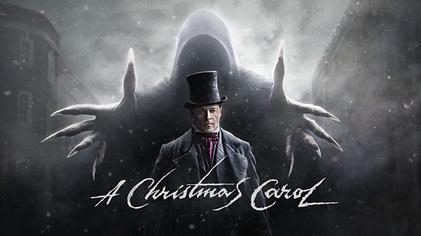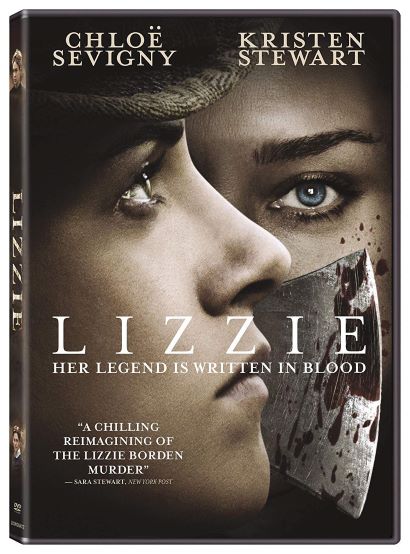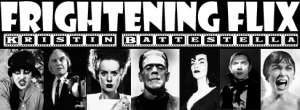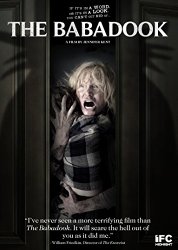
The Frankenstein Chronicles Season Two is Brimming with Monster Quality
By Kristin Battestella
The 2017 six-episode Second Season of The Frankenstein Chronicles picks up three years after the twisted events of its Debut Series as Sean Bean’s supposedly dead Inspector John Marlott pursues Lord Hervey (Ed Stoppard) for his monstrous science while Sergeant Joseph Nightingale (Richie Campbell) investigates the gruesome murders of several parish officials as new mad machinations and corrupt officials collide.
It’s 1830 and disturbed flashes of what has transpired match the Bedlam catatonic in “Prodigal Son.” Jailers think this case is hopeless, for the angry, rattling chains can’t tell of the heartbeats, fires, agony, and horrors. Silent screams, gory garrotings, and escapes lead to the abandoned laboratory with cracked mirrors, empty bottles, and lingering phantoms. The Frankenstein Chronicles refreshes the audience whilst the characters themselves struggle with the previous experiments, former pain, and fresh dilemmas as a murdered archdeacon sends fear through the local parish. The poor cannot feed their families on faith alone, but the Dean maintains his luxury by hampering the police with jurisdiction technicalities. New cemetery bills don’t stop grave robbing schemes, and cruel high versus kind lows are firmly established in the multi-layered mysteries and investigations. Despite a sophisticated period mood, church fires, eviscerating shocks, and eerie figures with lone candles always remind viewers of the morose horror drama. London is run amok with slicing and dicing nobles on The Frankenstein Chronicles, and there’s no solace for “Not John Marlott” as more bloody crimes begat missing organs, epidemics, and piled bodies. Creepy dreams and laughing visions add to the on edge, ghosts approach former friends, and headlines say the escaped lunatic is responsible for these unholy murders. Local parish watchmen rebuff inspectors, and back-alley deals lead to corpse bearer job opportunities and intriguing new characters. Desecrated bodies are dug up and moved to pits – clearing the graveyards for people who can pay more for sacred ground. Mirrors and reflections create more soulful questions as the dead man walking sees the naked, animalistic internal monster. Shrouds, vaults, torches, and coffins keep The Frankenstein Chronicles on the morbid move in “Seeing the Dead.” Our former detective has his own underground investigation amid the church bells, empty steeples, and plague-ridden alongside tender moments and a real life famous name or two. Dead children abound, and families that can’t afford consecrated burials paint crosses on their doors to honor the deceased while a carnival caravan arrives with freaks and re-enactments of Frankenstein. Politicians argue about burial taxes, and motives for the murders include selling off church properties, twisted science, and blaming the devil. Who’s clearing the slums and pocketing the money? It isn’t God who’s brought this pestilence, but men of science playing with God’s power. Black horses, night owls playing the piano by candlelight, and men talking of the final nail in the coffin add symbolic subtext while dreams, monster memories, and ghosts provide clues. Superstitious fears and wrongful medicine clash thanks to sewers, sailors, on stage within Frankenstein horrors, and knife fights behind the curtain. Autopsies, methodical precision, and poisoned pumps hone in on the contaminated truth – revelations perhaps made more disturbing by the water crises happening in America today.
Old inspectors and suspicious aristocrats meet face to face in “Little Boy Lost” amid fancy balls and false sermons waxing on demons and souls. Unfortunately, the truth is blasphemy, and quarantined ships send the sick to die in abandoned buildings behind chained doors – making for some silently terrifying scenes of garish dead haunting the corridors. Messengers from religious officials come baring knives in the back, leading to bloody struggles and gurgling groans. The innocent must flee in chases through the streets and leaps across rooftops, contrasting the footmen and tête-à-têtes on the ballroom balcony. Lifelike machines and automaton displays escalate the mad science amidst more grief, twists about who is real or phantom, and dead babies in jars. Thanks to town mobs and persecutions, circus folk with cut out tongues are arrested just because they fit the description of monsters, but ominous staircases descend to bright laboratories, creepy equipment, and shocking revelations with touching supernatural moments linking our characters. Politicians using the poor and too good to be true health plans in “The Marriage of Heaven and Hell” again mirror the contemporary political climate as scary ideologies hide in plain sight. Be it illness or slit throats, people in this era don’t live very long, and officials double-cross each other to fill the void left by the dying King. Likewise, constables and the press are at odds over evidence and thin leads as all roads point to monstrous men throwing their own to the dogs if it suits their toys, tears, and conspiracies. Blocks of ice are used to store organs alongside secret formulas, memento mori, psychic encounters, and plans to escape to the continent. Chilling confrontations trap the unwilling in the choice to be reborn, for more things are possible than what God can do according to our seemingly sacrosanct gentleman. Stone towers contain romantic rooms draped in white soon to host some serious butchery, transformations, and abominations. Why wait to rekindle what one’s lost in God’s time when life’s mysteries can come full circle now? Wounds and spirited intervention culminate in “Bride of Frankenstein” as lies, gags, and convulsions reunite our firstborn with the reanimation process. Life-giving elixirs, breathing apparatus, and unique tissues lead to coastal visions and life or death limbo. Our murder victims got in the way of political ambitions so now their bodies are being put to good use. There’s no need to make apologies when sacrificing for science! Once again The Frankenstein Chronicles builds its crimes and mysteries before escalating to full-on horror. Raids, arrests, and eponymous resurrections mean nothing when death is not the end for men who live forever in a world without God. However loose ends must be tied up, and another corpse on the church steps leads to confessions, ironic justice, and science preventing the dead from staying deceased in an excellent denouement of amoral horrors.
He’s angry, doesn’t know his own strength, and vows revenge, yet Sean Bean’s former inspector John Marlott remains haunted by his past. Initially he doesn’t speak much, only “I was abandoned by God,”– which sums up The Frankenstein Chronicles quite well. Marlott insists he isn’t who he was, for whether he was a man of kindness and justice or not, he received neither. Marlott feels forsaken since his family has gone on without him, yet he finds solace and a clean bed in a church and recognizes psalms of mercy when he hears them. Unfortunately, he can’t look himself in the mirror, and any peace is quickly ruined by tragedy. Marlott moves on, pushing away the living because everyone around him winds up dead. He becomes a corpse bearer and calls himself Jack Martins, revisiting places he once frequented to prove his innocence despite nightmares that seem to indicate otherwise. Marlott is disturbed by all the death he sees and talks to ghostly guests from Series One, but he’s more upset that he cannot see the spirits of his own wife and daughter. Marlott gives his coins to orphans and poor families so they can bury their dead properly and helps the sick households by doing their cleaning and hard labor, becoming the ironic hero of Pye Street roaming the slums at night – a foreboding grim reaper silhouette escorting a wagon of the dead to their mass grave. He tells people to flee the plague but ultimately ends up communing with their lingering spirits in superbly haunting moments. He cannot help the ghosts who torment him, but Marlott is deeply sorry for all the souls he seemingly damned. Forgiveness, however, may be found in the darkest places, and Marlott comes to accept he can live to do good even if he is not blessed. The Frankenstein Chronicles provides fascinating winks at Bean’s walking spoiler onscreen image amid chilling declarations, strong demands for vengeance, and tearful displays. Granted I am biased – and I still think Marlott is Sharpe – but Sean Bean seems to have become a better, more seasoned actor with age, and it is a pity The Frankenstein Chronicles received no awards notice for his excellent performance.

Though now a sergeant, Richie Campbell’s Joseph Nightingale is assigned to a seemingly routine escape from Bedlam rather than a murder higher up officials want forgotten. He’s a lot like Marlott, actually, getting praised for his initiative, punished for his insistence, and circumventing orders to find out about Marlott’s surprise reappearance. Joe must still deal with racism from above and below and knows he’s being stonewalled once victims’ bodies are removed before he can inspect them – leaving Nightingale no choice but to get the truth at a terrible price. Ryan Sampson’s fast talking Boz is still a reporter for the chronicle, chastised by Nightingale for writing outlandish reports to scare the public but shocked when the dead Marlott comes to see him. He wants Marlott’s surely fantastic story, and remains unfettered in his outrageous reporting, because the truth that victims are having their hearts cut out is supposed to scare people less? Although grossed out by the autopsy reports, he’s reluctant to give up his sources until their differing private exams prove they want him to print lies. Boz believes Marlott when he tells him there is a poisoning scheme in the works, but says he should do the talking when they poke around at the inquest. Charles Dickens ends up bombing around London with Frankenstein’s Monster – one of many fascinating what ifs on The Frankenstein Chronicles. Laurence Fox’s (Lewis) Mr. Dipple, meanwhile, is a creepy, reclusive aristocrat overly concerned with weird marionettes, music boxes, machine models, and masks. He’s become enamored with contraptions because he is afraid to live, seemingly tender or sensitive but suspect when he asks guests to keep an open mind about what they see. The character embodies several contemporary ills viewers will recognize – saying one thing but doing another for his own purpose , which is to have power over death and grief. Sadly, Maeve Dermody (Carnival Row) as kind, widowed seamstress Esther Rose is unknowingly caught in the middle when taking in Marlott while commissioned to make dresses for Dipple’s dolls. She buys clothes off the dead to re-sell to poor, not so particular customers and gives Marlott back his own effects. There’s not much difference between her craft and stitching him up when he’s injured, either. She’s glad to have him protect her shop, for Esther thinks she is weak, afraid to live, and too nervous when invited to a ball showcasing her work. She’s glad when Dipple calls her designs exquisite and doesn’t believe he has ulterior motives despite Marlott’s warnings. However, Esther insists she is not part of Dipple’s collection, vowing to be no man’s property despite her loneliness.
Lily Lesser as (Wolf Hall) Ada Byron, Lord Byron’s mathematician daughter, also dislikes Dipple’s obsession with “toys.” She’s interested in automatons for the future and power for women, debating Dipple about whether a man building machines means he has power over God. Men’s power pollutes what it touches, demanding obedience and stifling genius – leading to slavery and humans as the automaton. Although at times the character seems too modern, her progressive ideals aren’t wrong, and it would have been intriguing to see more of her. Corpse bearer Francis Magee (Game of Thrones) knows Marlott is too shrewd for this job, but then again so is he. Spence is a former priest who criticized the Dean for his greed, and now he fears he is in danger. Nonetheless, he does his gruesome job and stands by his convictions, returning to his Bible even to his own detriment. Unfortunately, Kerrie Hayes (Lilies) as Dipple’s orphan maid Queenie is also scared of her employer, his contraptions, and the locked doors deep inside his manor. She and Nightingale grew up in the foundling home together, and she clearly has a crush on him, telling him not to be consumed by blaming Marlott. Queenie wants to help Joe’s investigation, but her curiosity gets the better of her. She knows the police won’t believe what she’s seen, but eventually, Queenie finds tell tale tokens as proof for the police. Locating Ed Stoppard’s rumored to be dead Lord Hervey, however, isn’t so easy. He’s as in pursuit of his creation as Marlott is, but is he truly connected to the current crimes or is Marlott’s wishful seeking of justice involving the not so good doctor? Hervey is said to be here or there, off in the carriage, or just missed him – pinning his gruesome actions on others as it suits his plans. He’s happy to offer the choice of transformation to those who want it, developing a sick delight in what he does. For Hervey, there is no such thing as God’s will, only indifferent science. Sir Robert Peele, however, wants to build new closed burials and give the poor the right to a Christian interment, but Tom Ward’s Home Secretary has to move fast on his reforms before losing the ailing George IV’s favor. Peele seeks cleaner cities where nearby decomposition isn’t going back into the water and objects to the circumvention of his authority, for Guy Henry’s (Rogue One) Dean of Westminster lords over everyone with his stranglehold on the police as well as the church. He squashes murder investigations, pockets burial fees, and uses Martin McCann (The Pacific) as parish coroner Renquist to do away with the bodies privately. For his dirty deeds, Renquist rightfully fears he’s going to be the fall guy, just another of many corrupt officials on The Frankenstein Chronicles.
Fallen leaves and overcast skies create a perpetual autumn feeling for The Frankenstein Chronicles while barren coasts invoke a bleak limbo. Storms, mud, moors, and fog contrast the carriages, top hats, walking sticks, and frock coats. Careful editing, silence, and natural sounds parallel the horror realizations amid dank cells, chains, spooky lanterns, and autopsies. There are fancy stone manors and slum streets, but the graveyards and churches are somewhere in between – grand, old, but empty cloisters despite the cross’s symbolic shelter and arched windows providing rare light. Wax seals, lockets, quills, waist coats, and cravats birth mechanical innovations, clockworks, masks, and uncanny valley eyes, layering the creepy science what ifs alongside the innocent flowers, lace, and painstaking embroidery attention to detail. Fair fiddles and carnival acts provide morbid bemusement, yet our star is often alone in the center of the camera frame or on the outside looking in at the action through doorways or arches. Then again, golden sconces and grand libraries can’t compare to decomposing bodies as the gasps and covering mouths provide shock and stench for the audience. Sometimes the blue and night time drab are too dark, however, firelight adds a realistic touch so often missing from overly saturated shows. Oil lamps and disturbing harpsichord music accent syringes, hissing gears, leeches in jars, elixirs, tubes, catalysts, and beakers. The candlelit laboratory almost has an enchanting glow, but who knew blocks of ice could be so..well…chilling? Oddly, neither director Benjamin Ross nor writer Barry Langford are involved in Season Two – all new writers join director Alex Gabassi (The ABC Murders). With previouslies and credits, these episodes are also slightly shorter at forty-five minutes, however it is more annoying that Netflix wants to skip both with seconds to spare. The Frankenstein Chronicles Season Two doesn’t use Mary Shelley as a character or the William Blake interconnected themes from the First Season, either. Fortunately, the personal morals, monsters dilemmas, and new mad science elements expand the drama and performances. Although this year ends well, it’s a pity there is no word on a Third Season for The Frankenstein Chronicles. There’s still time and the series deserves more. In reviewing, I must multi-task, pause, and take notes. The Frankenstein Chronicles, however, is a can’t look away parable that’s easy to marathon and superbly blends period piece aesthetics, mystery, and horror.
For more Frankenstein, visit:
The Frankenstein Chronicles Season 1
Frankenstein: The True Story
Victor Frankenstein (2015)

 Hello Addicts,
Hello Addicts,
 The refreshing script simplifies the Dickensian wordiness yet we do get some of the sardonic undigested beef quips amid self-aware glances at the camera and eternity spent in a forest of abandoned Christmas trees and forgotten childhood memories. An act of kindness said to be given to someone in pain is rejected as the abused perpetuate abuse, dealing in greed and people as commodities. Those scarred mentally and physically by the cruel, cost-cutting overseers rightfully call upon revenge like a reverse It’s A Wonderful Life orchestrating this spiritual comeuppance. Snowfall and ash in the air mix as other realms and childhood fears merge with violent canes, creepy singsongs, and pets caught in the chilling crossfire in a house that can’t afford another mouth to feed. Hiding behind the bed curtains is used to frightful effect as A Christmas Carol shows what the book implies yet leaves nasty suggestions to the shadows. Hope, however, can be found small as a mouse, big as a camel, or even in fanciful book illustrations come to life to save a boy’s mind from his torturous reality. Unfortunately, people are only worried about themselves. Gifts are just unwritten debts and unprofitable affections. These spirits force us to relive the darkest moments of the picture we paint so we may unlearn the ills that have shaped who we are. Here A Christmas Carol feels timely and modern, layering the past with disturbing familiar faces and real-world terrors that harden a boy’s heart and break our Christmas spirit. Magical deflections, pleas to go home, and facing the horrors combine for superb duality and visualizations as children may or may not see spirits and two of the same character appear in the same place at once. Loom factories become massive calculators in an industrial fantasy hitting home the cold hard numbers. Tragedy for many is opportunity for the few, and that’s just good business to see pounds instead of people and exploit their weaknesses accordingly. Shameful humiliations done on Christmas Day are born not out of desire, but agonizing experiments testing the solemn limits of what good people will do for money. Viewers contemplate how far A Christmas Carol will go in examining the the value of human virtue, and Merry Christmas greetings are said for all the wrong reasons – justifying the prayers, warnings, and curses that one day the truth will look us in the mirror. Mining survivors unite in memorial choirs, and the poor make up the difference with happiness and love instead of itemizing priceless intangibles. Halos at the altar suggest salvation, but admitting regret or that love came too late to stop hatred isn’t enough against chilling figures in the dark, haunting drownings, cracking ice, and death shrouds. Tolling bells and heartbeats announce the fatal consequences as we accept our deserved fate. For all the spirited meddling, it is up to us to change and act for the benefit of others without expectation of reward as A Christmas Carol concludes in full Dickensian compassion.
The refreshing script simplifies the Dickensian wordiness yet we do get some of the sardonic undigested beef quips amid self-aware glances at the camera and eternity spent in a forest of abandoned Christmas trees and forgotten childhood memories. An act of kindness said to be given to someone in pain is rejected as the abused perpetuate abuse, dealing in greed and people as commodities. Those scarred mentally and physically by the cruel, cost-cutting overseers rightfully call upon revenge like a reverse It’s A Wonderful Life orchestrating this spiritual comeuppance. Snowfall and ash in the air mix as other realms and childhood fears merge with violent canes, creepy singsongs, and pets caught in the chilling crossfire in a house that can’t afford another mouth to feed. Hiding behind the bed curtains is used to frightful effect as A Christmas Carol shows what the book implies yet leaves nasty suggestions to the shadows. Hope, however, can be found small as a mouse, big as a camel, or even in fanciful book illustrations come to life to save a boy’s mind from his torturous reality. Unfortunately, people are only worried about themselves. Gifts are just unwritten debts and unprofitable affections. These spirits force us to relive the darkest moments of the picture we paint so we may unlearn the ills that have shaped who we are. Here A Christmas Carol feels timely and modern, layering the past with disturbing familiar faces and real-world terrors that harden a boy’s heart and break our Christmas spirit. Magical deflections, pleas to go home, and facing the horrors combine for superb duality and visualizations as children may or may not see spirits and two of the same character appear in the same place at once. Loom factories become massive calculators in an industrial fantasy hitting home the cold hard numbers. Tragedy for many is opportunity for the few, and that’s just good business to see pounds instead of people and exploit their weaknesses accordingly. Shameful humiliations done on Christmas Day are born not out of desire, but agonizing experiments testing the solemn limits of what good people will do for money. Viewers contemplate how far A Christmas Carol will go in examining the the value of human virtue, and Merry Christmas greetings are said for all the wrong reasons – justifying the prayers, warnings, and curses that one day the truth will look us in the mirror. Mining survivors unite in memorial choirs, and the poor make up the difference with happiness and love instead of itemizing priceless intangibles. Halos at the altar suggest salvation, but admitting regret or that love came too late to stop hatred isn’t enough against chilling figures in the dark, haunting drownings, cracking ice, and death shrouds. Tolling bells and heartbeats announce the fatal consequences as we accept our deserved fate. For all the spirited meddling, it is up to us to change and act for the benefit of others without expectation of reward as A Christmas Carol concludes in full Dickensian compassion.





















